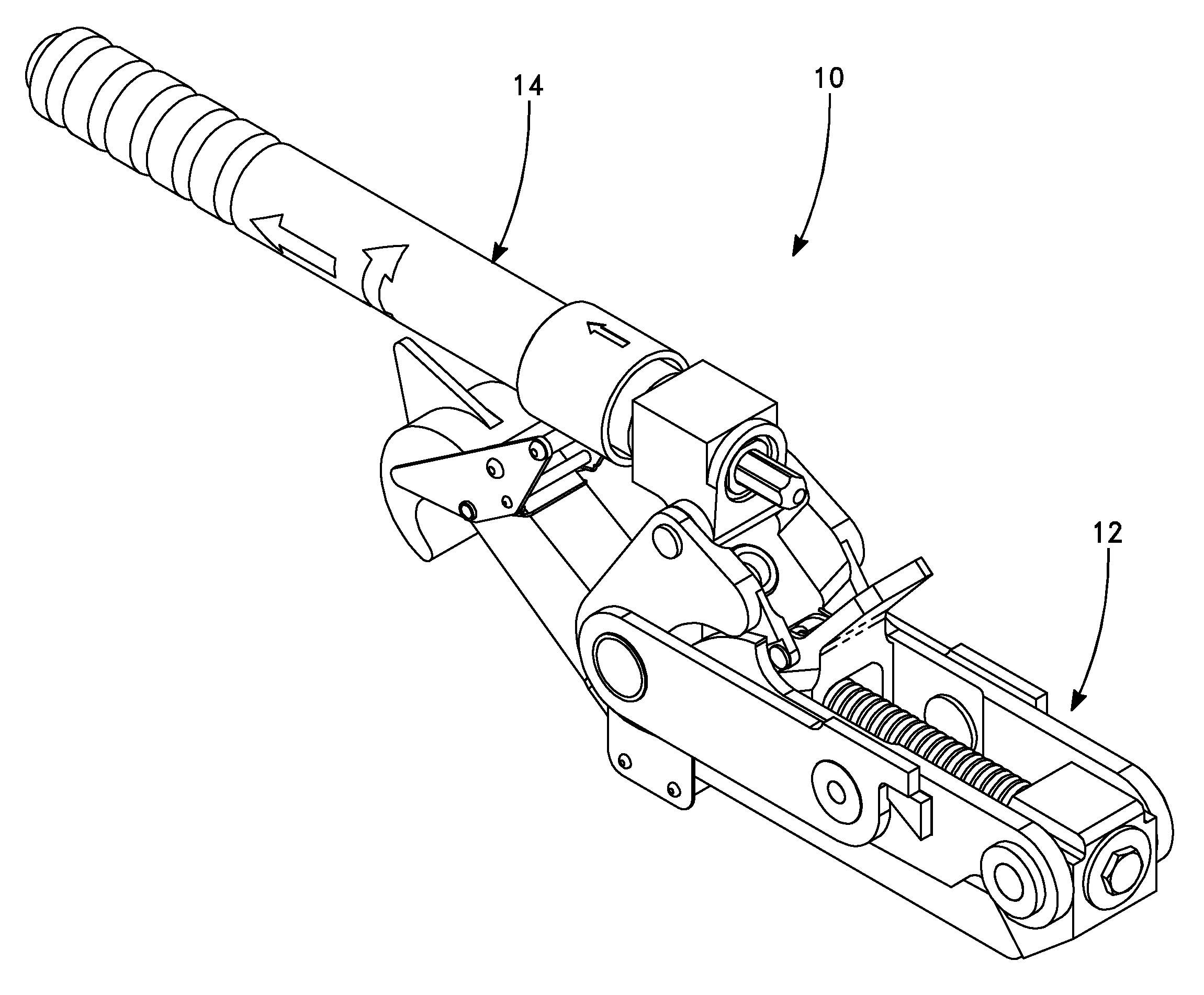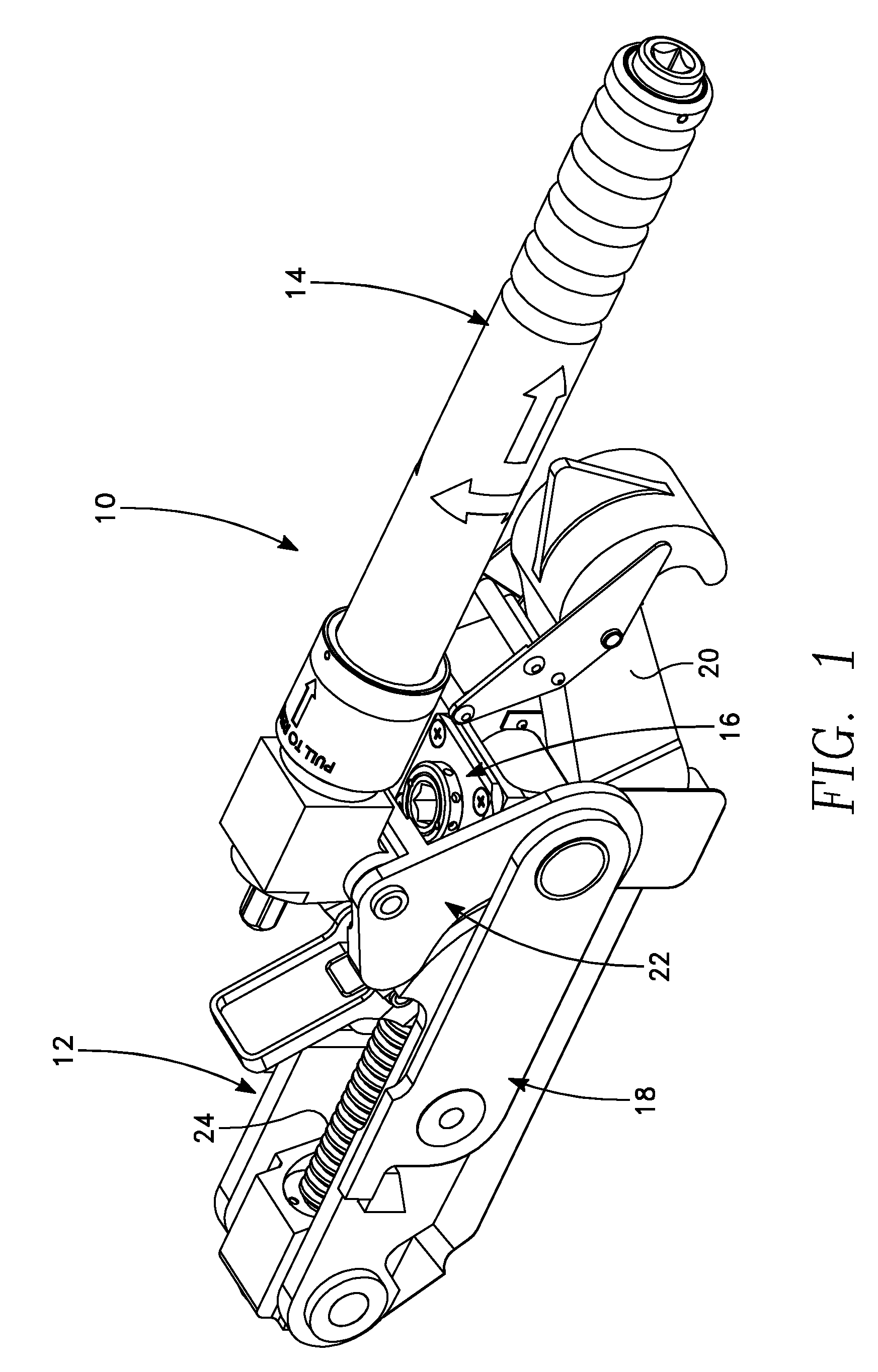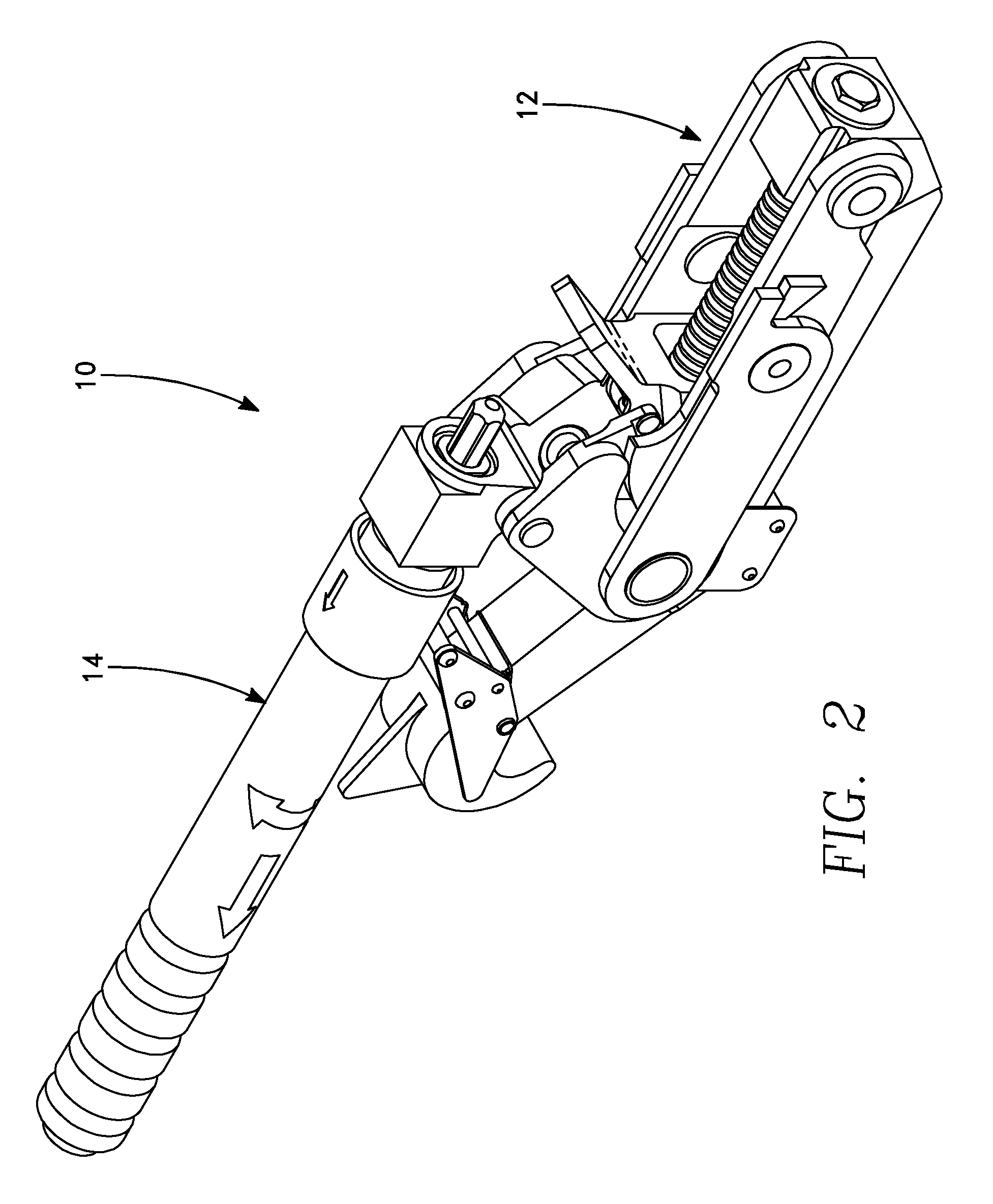Latching mechanism
a technology of latching mechanism and latching plate, which is applied in the field of latches, can solve the problems of higher load on latching plate, and achieve the effects of large take-up requirements, higher load, and higher load
- Summary
- Abstract
- Description
- Claims
- Application Information
AI Technical Summary
Benefits of technology
Problems solved by technology
Method used
Image
Examples
Embodiment Construction
[0013]Referring now to the Figures, an embodiment of the disclosed latching mechanism 10 is depicted in FIG. 1. The latching mechanism 10 generally comprises two components, being a latch assembly 12 and a handle member 14. Latch assembly 12 generally comprises a gear housing 16, an over-center link assembly 18, a latch body 20, cam member 22, and a spindle 24. Referring to FIG. 3, in indicating various directions within the following description, the front of the latching mechanism 10 is indicated as F, the rear is indicates as R, the bottom is indicated as B, and the top indicated as T. However, it is to be appreciated that the latching mechanism 10 is operational in any relative position and the above designations are provided for reference purposes only.
[0014]Gear housing 16 comprises a pair of intermeshing bevel gears 26, 28 which are generally mounted at right angles to one another. The first bevel gear 26 has means for engagement with the spindle 24, such as a rearward facing...
PUM
 Login to View More
Login to View More Abstract
Description
Claims
Application Information
 Login to View More
Login to View More - R&D
- Intellectual Property
- Life Sciences
- Materials
- Tech Scout
- Unparalleled Data Quality
- Higher Quality Content
- 60% Fewer Hallucinations
Browse by: Latest US Patents, China's latest patents, Technical Efficacy Thesaurus, Application Domain, Technology Topic, Popular Technical Reports.
© 2025 PatSnap. All rights reserved.Legal|Privacy policy|Modern Slavery Act Transparency Statement|Sitemap|About US| Contact US: help@patsnap.com



